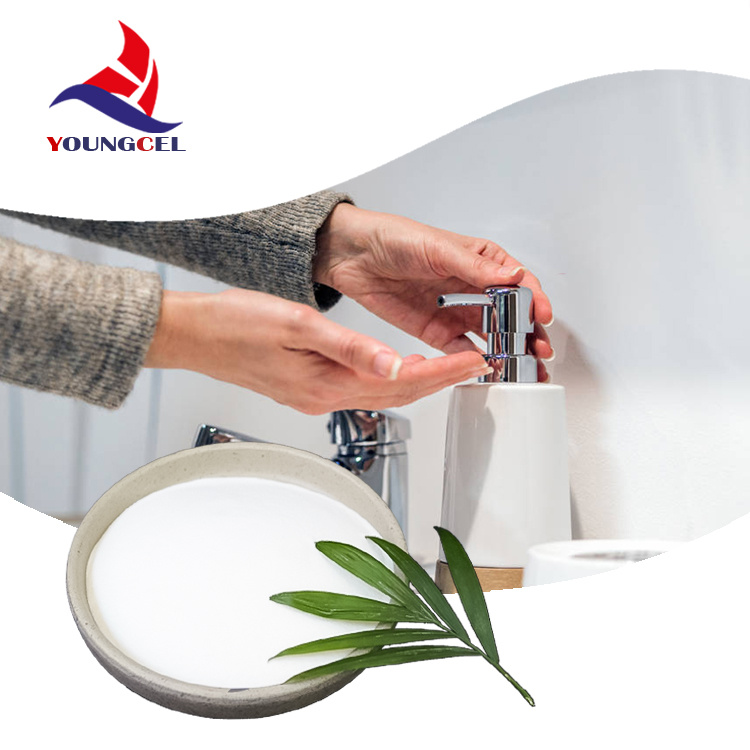The Versatility and Applications of Hydroxypropyl Methyl Cellulose in Various Industries
Hydroxypropyl Methyl Cellulose (HPMC) is a white, odorless, and tasteless powder derived from cellulose, a natural polymer found in plants. It is a non-ionic cellulose ether created through a series of chemical modifications. HPMC has gained significant attention across various industries due to its remarkable properties, which include excellent film-forming capabilities, water-retention, and thickening ability. These characteristics have led to its widespread use in pharmaceuticals, food, construction, and cosmetics.
Properties of HPMC
One of the most notable properties of HPMC is its solubility in cold water, forming a viscous gel, while being insoluble in organic solvents. Its thickening capability allows industries to achieve desired viscosities in their formulations. Additionally, HPMC exhibits pseudo-plastic behavior, which means that its viscosity decreases under shear stress—an essential property for manufacturing processes that involve mixing and pumping.
The versatility of HPMC extends beyond its physical characteristics. It is relatively inert, making it an ideal candidate for sensitive applications, particularly in the pharmaceutical field. It is also biodegradable, which aligns with the growing environmental concerns and the shift towards sustainable materials.
Applications in Pharmaceuticals
In the pharmaceutical industry, HPMC serves multiple roles. It is commonly used as a binder and disintegrant in tablet formulations, promoting the uniform distribution of active ingredients and ensuring the tablets break down effectively in the gastrointestinal tract. Additionally, HPMC is utilized in controlled-release formulations, providing a stable matrix for the gradual release of drugs. This property is particularly beneficial in managing chronic diseases where medication adherence is critical.
HPMC is also employed in the production of ophthalmic solutions. Its ability to retain moisture makes it a suitable ingredient for eye drops, enhancing comfort and providing lubrication. Moreover, it is used in various topical creams and gels, where its film-forming properties contribute to a smooth texture and prolonged wear on the skin.
HPMC in Food Products
chemical hpmc hydroxypropyl methyl cellulose

The food industry has also recognized the benefits of HPMC. As a food additive, it functions as a thickener, stabilizer, and emulsifier. It helps maintain the uniformity of food products by preventing the separation of ingredients, particularly in sauces and dressings. HPMC can also enhance the texture of baked goods, providing moisture retention and improving shelf life.
Moreover, HPMC is a popular ingredient in gluten-free and low-fat products as it mimics the desired texture and flavor profile that might be lost due to the absence of gluten or fat. Its ability to form gels allows manufacturers to create healthier alternatives without sacrificing quality.
HPMC in Construction Materials
In the construction industry, HPMC's water retention capability makes it invaluable in cement-based applications such as plaster and tile adhesives. By improving workability and extending the open time for these materials, HPMC ensures better adhesion and durability of construction products. It also helps to minimize shrinkage and cracking, enhancing the structural integrity of buildings.
Moreover, HPMC is utilized in ready-mixed mortars and wall coatings, providing thickness and improving the moisture resistance of these materials. Its film-forming properties also contribute to the waterproofing characteristics, making it an essential additive for a wide range of construction solutions.
The Role in Cosmetic Products
The cosmetic industry has embraced HPMC for its thickening and emulsifying properties, allowing the formulation of lotions, creams, and gels. It helps stabilize emulsions, thereby enhancing the shelf life of products. HPMC is also appreciated for its non-greasy feel and smooth application, making it ideal for personal care formulations.
Conclusion
Hydroxypropyl Methyl Cellulose is a multifunctional ingredient that plays a crucial role in various industries, from pharmaceuticals to food, construction, and cosmetics. Its unique properties enable manufacturers to improve product performance, enhance user experience, and meet the growing demands for sustainable and effective solutions. As industries continue to innovate, the importance of HPMC is likely to grow, reflecting its versatility and efficacy in addressing contemporary challenges.
-
The Application and Significance of Construction RdpNewsMay.19,2025
-
Industrial Grade HpmcNewsMay.19,2025
-
Building Coating Adhesive Building Coating Adhesive HpmcNewsMay.19,2025
-
Application Of Hpmc For Detergent For Detergent In DetergentsNewsMay.19,2025
-
Application Of Hpmc Cellulose In Cement-Based MaterialsNewsMay.19,2025
-
Application Of High Quality Hpmc For Construction In The Field Of ConstructionNewsMay.19,2025




